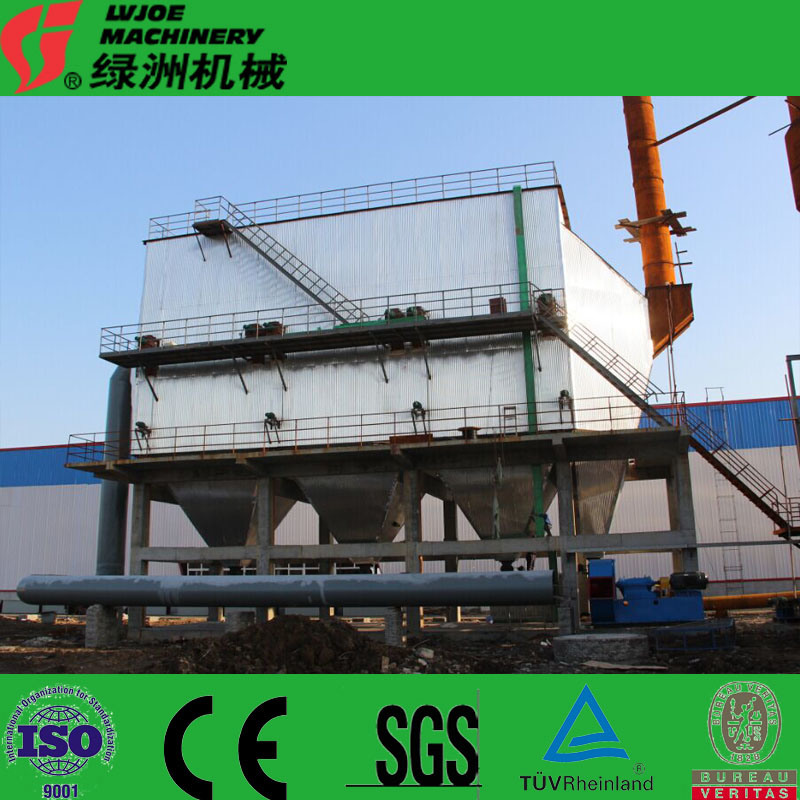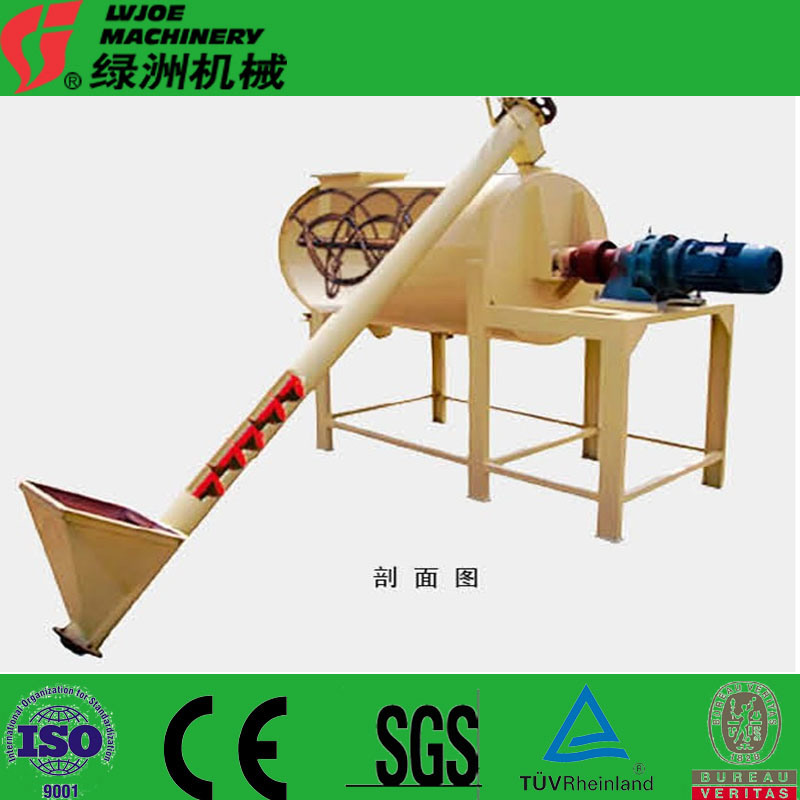- Model NO.: LVPG-500
- Control Type: CNC
- Automatic Grade: Automatic
- Feature: Very Cheap Cost + Environment-Friendly
- Calcining Type: Vertical (Hot Air)
- Size: 80 to 325 Mesh
- Workers: 12 Per Shift
- Machines Area: 55 X 25m
- Specification: SGS, BV
- HS Code: 8474809090
- Certification: ISO 9001:2008, BV
- Crushing Degree: Fine Grinding Machine
- Capacity: 500tpd
- Fuel: Gas, Diesel or Coal
- Final Production: Sell It to Cement Plant, Plasterboard Plant etc.
- Installed Power: 585kw
- Bagging: Rotary Type
- Trademark: LVJOE MACHINERY
- Origin: Shijiazhuang, Hebei Province
Physical properties and ingredientÂ
Phosphogypsum is byproduct derived from fertilizer industry etc. It looks clay, grey, yellowish, light green etc with 2.05~2.45g/cm3 in density, 0.85g/cm3 in volume weight. Normally the byproduct is 4.5~5.5 ton if fertilizer plant produces 1 ton phosphoric acid.Â
Â
Phosphogypsum is fine powder, 95% particle less than 0.2mm, 20%~30% free moisture, and also contain P, F, organic matter, SiO2, little quantity harmful impurities. Normally, PH value is less than 4.5.
Â
The main chemical composition of phosphogypsum is calcium phosphate, equation as follow:
Ca(PO4)3F(phosphorite)+H2SO4→H3PO4+CaSO4(phosphogypsum)+HF
Â
Phosphogypsum contain many impurities. The main impurity is P. Other are alkali salt, Si, Fe, Al, Mg etc. Alkali metal exist in form of soluble salt, like carbonate, sulfate, phosphate, fluoride etc. W(R20) content is 0.05%~0.3% (calculate in sodium equivalent).  It also contain SiO2 1.5%~5% (quartz and little Na2SiF6. Fe2O3, AL2O3, MgO and other organic matter generated from phosphate ore.
Â
1.2Â ApplicationÂ
1.2.1 Cement industryÂ
1.2.2 Producing gypsum production (wall plaster, stucco gypsum, calcined gypsum powder, gypsum slurry, paper faced gypsum board, gypsum partition board, fiberglass plasterboard, gypsum block, plaster of paris, brick, etc)
1.2.3 Produce chemical raw material (ammonium sulfate, potassium sulfate, sulfourea and calcium carbonate).
1.2.4 Agriculture field
1.2.5 Roadbed or industrial packing
Â

2.1.2A Drying sectionÂ
After metering, the phosphogypsum meet hot airflow for drying free moisture. The phosphogypsum covered by hot air, and go up with steam, hot air, wind. After drying, water content is 3-5% in dry phosphogypsum powder. Two choices here, dry phosphogypsum goes out directly, or go to next step for calcining.Â
Advantages:
1. The exposed surface area of hot air and gypsum powder is very big (gypsum powder will be dried quickly). It looks like gypsum powder is flying in the hot air. Volumetric evaporation intensity is 0.003 to 0.6kg/m3·s
2. The gypsum powder only stay hot air for minutes
3. Less devices. Because dried gypsum powder will be moved by air
4. Simple structure, less land, no rotary parts, easy maintenance, less cost
5. The water content of final gypsum powder less than 1%Â
2.1.3A Calcining section
The dry phosphogypsum powder enter fluidized bed furnace for calcining via dust collecting system. The calcining temperature is 150~160ºC. The parameters of finished plaster of paris adjusted by changing temperature of fluidized bed furnace for meeting different requirements.Â
2.1.4 Finished product storage and packing sectionÂ
The calcined plaster of paris conveyed into silo. Bulk packing, small bag packing are available according to requirement of buyer.Â
2.1.5 Modify mill
If you want to produce gypsum board from phosphogypsum powder, you will need this machine. Phosphogypsum has birth defect in specific surface area and granular composition. Its specific surface area is only 1500cm2/g (about 40~60% compared with mineral gypsum powder). Its particle size is 40~60μm (much smaller than mineral gypsum powder in granular composition). That is why calcined phosphogypsum powder is not good in fluidity, bigger volume weight, much more layers, particles segregation after adding water. If you produce gypsum board by this phosphogypsum powder, the paper may not stick gypsum board, or block mixer, or can not get slurry etc.Â
Hence, we add modify mill for calcined phosphogypsum powder for improving its characteristic for avoiding failure in producing gypsum board by phosphogypsum powder. What is more, the compositions will not change after modify mill. That is to say, the strength of calcined phosphogypsum powder will not change.
The technical data of phosphogypsum powder before & after milling.
| Name | Produce construction gypsum by phosphogypsum | |
| Before grinding | After grinding | |
| Dihydrate gypsum (%) | 4 | 4 |
| Hemihydrate gypsum (%) | 84 | 84 |
| Anhydrite III (%) | 4 | 4 |
| Anhydrite II (%) | 5 | 5 |
|
Specific surface area (cm2/g) Blaine method |
1600 | 4700 |
| Loose bulk density (g/L) | 1100 | 900 |
| Water/gypsum ratio | 0.65 | 0.72 |

3.1 gypsum plaster section
   You can make plaster by calcined gypsum. Please add some additives for delaying its initial setting time (from 15 minutes to 180 minutes). What is more, you also need to add about 35% gypsum powder (from gypsum rock) for mixing it.

   Â